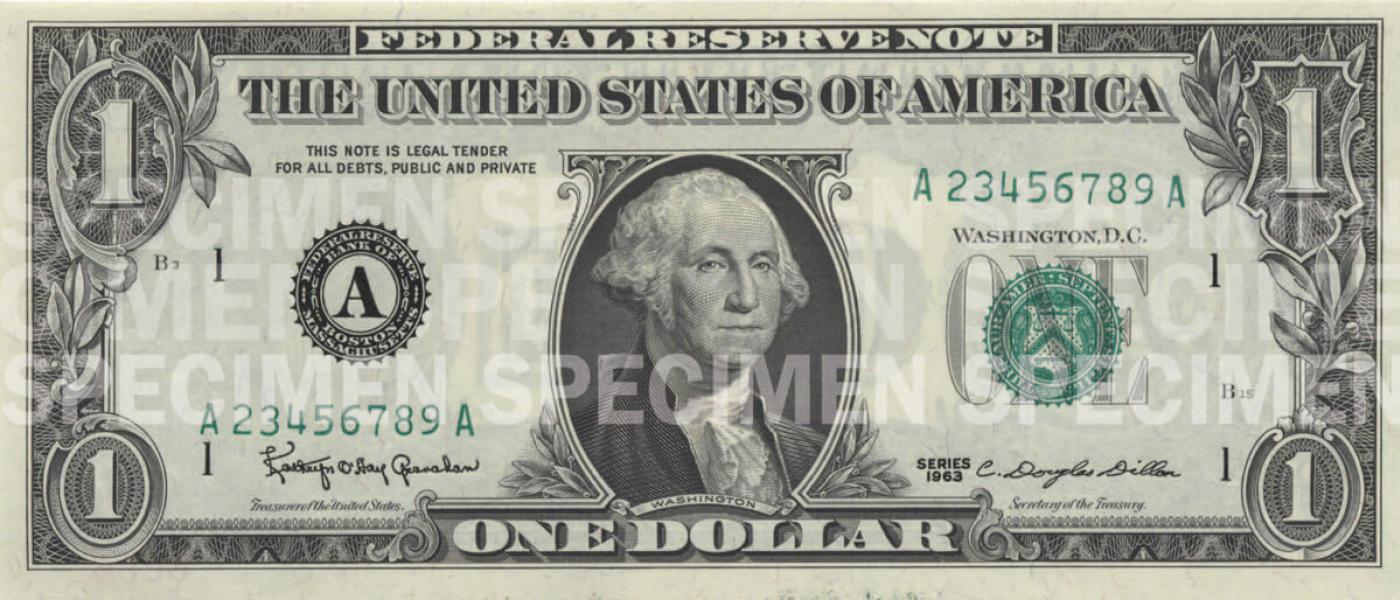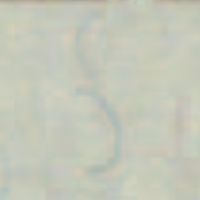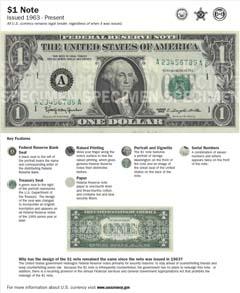
A black seal to the left of the portrait bears the name and corresponding letter of the distributing Federal Reserve Bank.
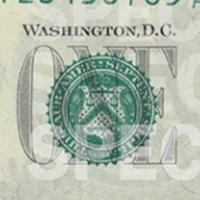
A green seal to the right of the portrait represents the U.S. Department of the Treasury. The design of the seal was changed to incorporate an English inscription and appears on all Federal Reserve notes of the 1969 series year or later.

The $1 note features a portrait of George Washington on the front of the note and an image of the Great Seal of the United States on the back of the note.

A combination of eleven numbers and letters appears twice on the front of the note.
The $1 Federal Reserve note was issued in 1963, and its design—featuring President George Washington and the Great Seal of the United States—remains unchanged.
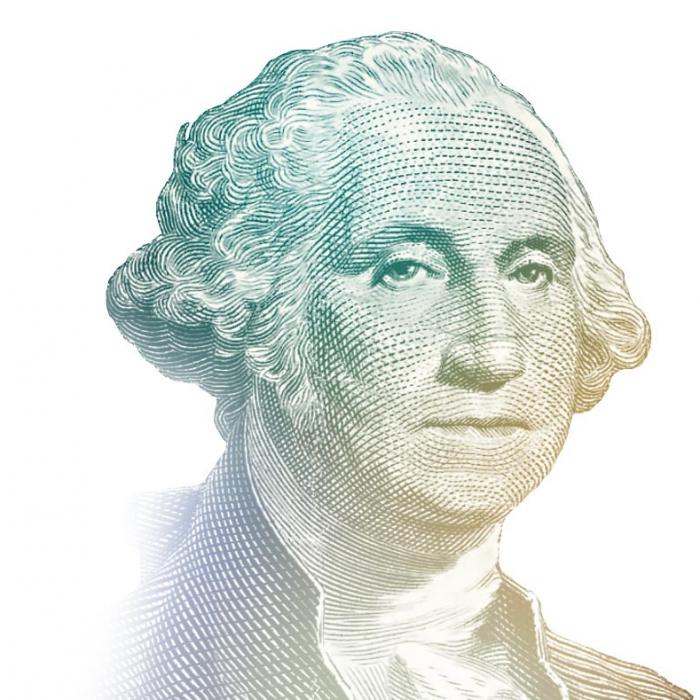
Downloads

These printable coloring sheets of denominations $1, $2, $5, $10, $20, and $100 are intended for children, parents, and teachers.
